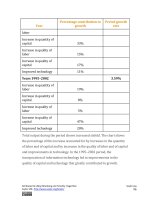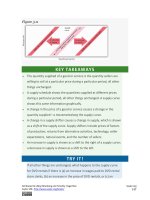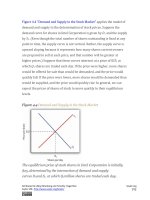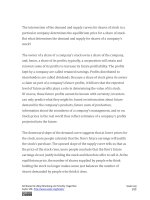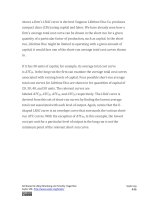Authors libby rittenberg 718
Bạn đang xem bản rút gọn của tài liệu. Xem và tải ngay bản đầy đủ của tài liệu tại đây (525.59 KB, 1 trang )
Renewable Natural Resources
As is the case with exhaustible natural resources, our consumption of the
services of renewable natural resources can affect future generations.
Unlike exhaustible resources, however, renewable resources can be
consumed in a way that does not diminish their stocks.
Carrying Capacity and Future Generations
The quantity of a renewable natural resource that can be consumed in any
period without reducing the stock of the resource available in the next
period is its carrying capacity. Suppose, for example, that a school of 10
million fish increases by 1 million fish each year. The carrying capacity of
the school is therefore 1 million fish per year—the harvest of 1 million fish
each year will leave the size of the population unchanged. Harvests that
exceed a resource’s carrying capacity reduce the stock of the resource;
harvests that fall short of it increase that stock.
As is the case with exhaustible natural resources, future generations have a
stake in current consumption of a renewable resource. Figure 13.11
"Future Generations and Renewable Resources" shows the efficient level of
consumption of such a resource. Suppose Qcap is the carrying capacity of a
particular resource and S1 is the supply curve that reflects the current
marginal cost of utilizing the resource, including costs for the labor and
capital required to make its services available, given the interest rate and
expected future demand. The efficient level of consumption in the current
period is found at point E, at the intersection of the current period’s
demand and supply curves. Notice that in the case shown, current
Attributed to Libby Rittenberg and Timothy Tregarthen
Saylor URL: />
Saylor.org
718
